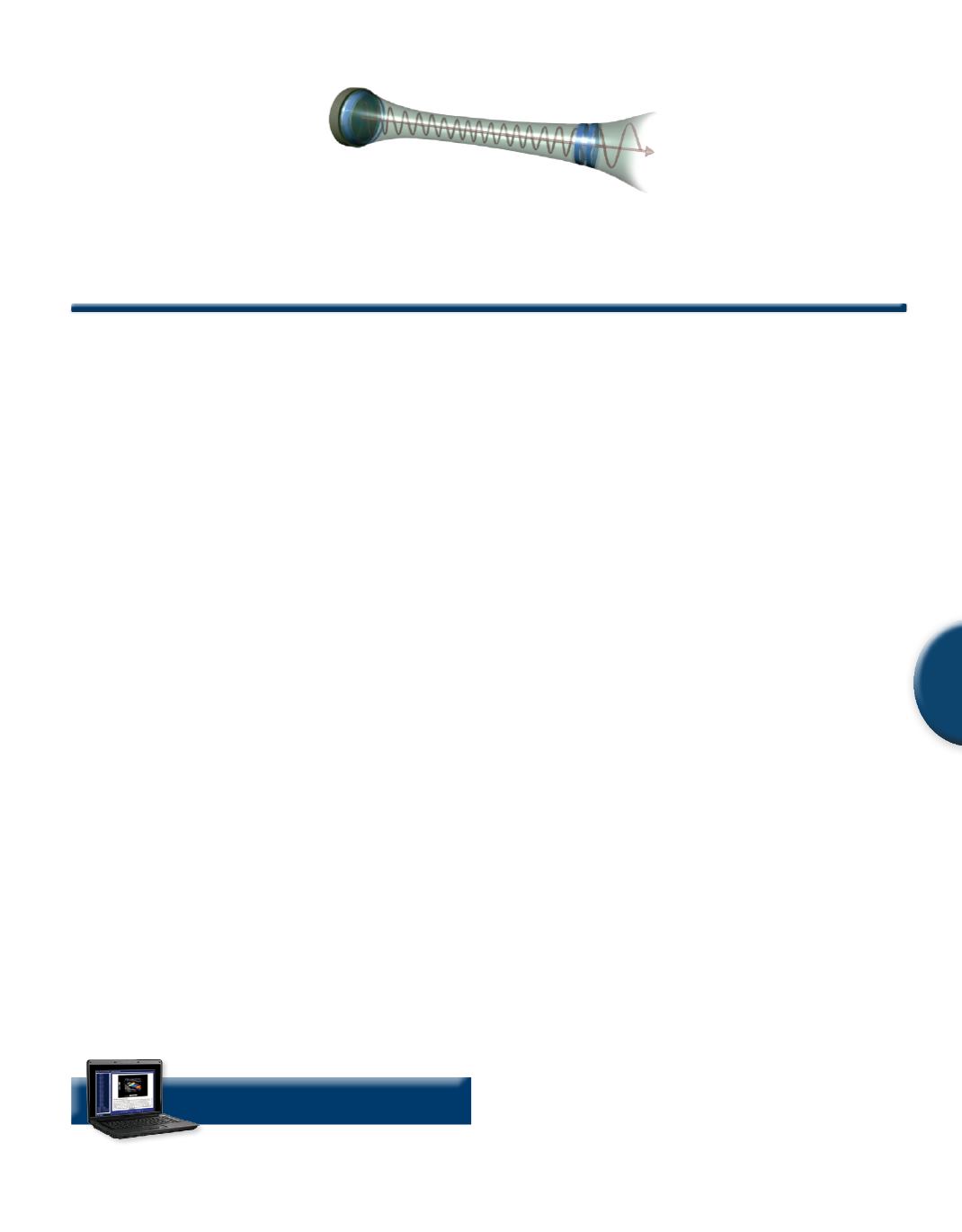
Chapter 16: Elastography
459
16
Physics of Tissue Elasticity Imaging
and Estimation
1. Palpation and Tissue Stiffness
The imaging and quantitative estimation of tissue elasticity is an
outgrowth of palpation, an important physical examination tech-
nique practiced by all physicians and dating back to ancient Egypt,
as early as 2600 BCE. The method of palpation is simple; apply pres-
sure through the fingers to the skin to detect masses and nodules
within the body. These abnormalities can be detected if they are
stiffer (harder) than the surrounding tissue. Palpation can be applied
to any part of the body but is most commonly used to evaluate the
liver, spleen, thyroid, neck, breast and prostate gland. Most tumors
are stiffer than the normal tissue in which they form (especially
cancerous tumors) so cancers are frequently readily palpable. On
the other hand,stiffness may also be used to evaluate non-cancerous
tissues. For example,inflamed or infected tissuemay be considerably
stiffer than normal (called induration) whereas blood undergoing
reabsorption by the bodymay become soft. The physics of palpation
have been discussed recently by Hall et al.
1
Most medical imaging methods (e.g., radiography, CT, MRI, and
Ultrasound) detect primarily anatomy, and with the addition of
contrast agents, the blood flow to an organ or region. These same
technologies can be adapted to provide information about the stiff-
ness of tissues. Since ultrasound is typically performed as a real-time
examination, tissue stiffness can be estimated visually by applying
compression with the transducer and watching the response of
underlying tissues. Stiffer tissues will compress less than adjacent
softer tissue. Alternatively, one can use a finger to compress tissue
locally while interrogating with ultrasound. Soft tissues compress
like a sponge, whereas harder tissues will move as a unit without
compressing. This method is known as echopalpation.
VIEW ONLINE ANIMATION AND IMAGE LIBRARY
2. History of Elastography
True tissue elasticity imaging, known as elastography, developed
from early tissue motion research carried out in England in the
early 1980s. These early techniques used M-mode ultrasound to
monitor changes in tissue position over time. This method was
supplemented with Doppler-based tissue motion detection in
1987, which subsequently evolved at the University of Rochester
into a Doppler-based tissue stiffness imaging technique called so-
noelasticity imaging. Shortly thereafter, in 1991, the technique of
elastography (now called static elastography) was developed at the
University of Texas by Jonathan Ophir and colleagues. Elastography
has subsequently become the most widely usedmethod for imaging
of tissue elasticity and is an option available from almost all com-
mercial ultrasound vendors.
3. Elastography Method Categorizations
Tissue elasticity imaging and estimation methods can be divided
into two major groups: quasi-static, in which tissue is imaged prior
to and shortly after compression, and dynamic, in which some sort
of vibratory wave is imaged or tracked while traveling through tis-
sue. For quasi-static (usually simply termed “static”) elastography,
the tissue must be compressed either by an external compression
device (often the ultrasound transducer itself) or by internal motion
such as vascular pulsation or respiratory movement. In dynamic
elastography, vibration must be applied by an external piston or
vibrator. These typically produce many vibration waves which are
tracked while traveling through tissue. Transient elastography is a
variant of dynamic elastography in which a single rapid compres-
sion is applied to create a single wave that is tracked as it travels
through tissue.
4. Static Elastography
Static elastograms are created by first capturing the image data from
tissue,then compressing the tissue slowly and capturing another im-
age data set post compression. Themovement of tissue in response to
the compression is estimated at each depth using a cross-correlation
function on the raw radio-frequency (RF) data. The shift required
to maximize the cross-correlation function is an estimate of tissue
displacement at that depth.In reviewing the Figures on the following
page, note that the reflected signal in the shaded window (labeled
Brian S. Garra, M.D.
Elastography
Chapter 16


